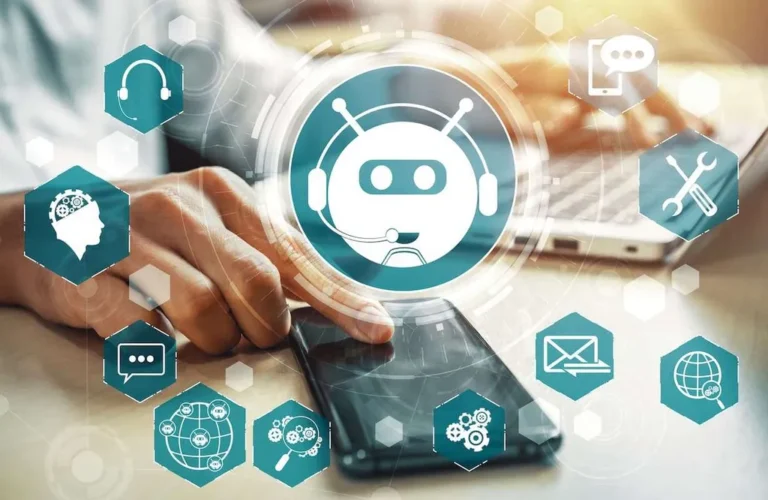Options Ai And Machine Learning Primer: A Know-how Overview For Enterprise Choice Makers
This is possible by way of a process referred to as closed loop automation—a continuous course of by which the network proactively displays its personal health and performance using real-time telemetry. This information feeds into AI/ML-driven decision engines that set off automated actions to optimize efficiency, security, and IT effectivity. AI in networking is remodeling the panorama, turning into an integral catalyst in enhancing efficiency, guaranteeing robust security, and instilling predictive adaptability inside IT infrastructures. The implementation extends beyond mere operational development, embodying the muse for self-sustaining networks, predictive analytics, and clever edge computing.
- Hedgehog is one other cloud-native software program firm using SONiC to help cloud-native utility operators handle workloads and networking with the benefit of use of the basic public cloud.
- Make certain that your compliance with these laws can be equally efficient in your AI techniques.
- Flow’s easy-to-use interface permits the seamless integration of large language models, immediate templates, and media models into your app’s logic for its easy conceptualization, creation, or modification.
- This can be accomplished solely with support from dependable, robust, flexible, and scalable networking solutions.
Artificial Intelligence (AI) performs an important position in providing more efficient, scalable, and intelligent options. Right Here are some key functions of AI in networking that contribute to smarter networks. Powered by AI, these configurations scrutinize user behavior, dynamically adjusting the network to prioritize distinct visitors, tailor bandwidth distribution, and provide an experience that transcends conventional connectivity. It’s about personalised and environment friendly person experiences crafted through network adaptability, setting a brand new standard in connectivity. AI-powered networks not solely foresee issues but in addition autonomously handle disruptions with the implementation of corrective measures.
It can even do predictive maintenance, where machines can predict that one thing is wrong and rectify it earlier than causing an issue. In this evolving landscape, market analysis companies like Arensic International are well-positioned to supply insights, analysis, and guidance to organizations navigating the complexities of AI-driven networking. General, AI networking represents a major evolution in network administration, optimization, and safety. By harnessing the facility of AI, organizations can build extra resilient, efficient, and intelligent networks that meet the calls for of today’s digital landscape. As AI technologies proceed to advance, the potential for innovation and transformation in networking will only proceed to grow, ushering in a new era of clever networking.
Contact Cisco
This detailed evaluation permits the prediction of network development developments, guaranteeing that the network capacity is scaled appropriately to meet evolving requirements. Furthermore, it assists in fine-tuning performance metrics by figuring out areas that could be underperforming or experiencing issues, thereby empowering organizations to handle community health proactively. AI significantly enhances traffic management by making smart routing decisions, adapting to altering traffic patterns, prioritizing key functions, and guaranteeing Quality of Service (QoS). This leads to a extra sturdy, flexible, and clean interaction between customers and the community, ensuring a dependable and uninterrupted experience. Strategies like ‘traffic shaping’ allow community managers to get essentially the most out of their networks.

Ai For Buyer Expertise

AI algorithms can analyze network site visitors patterns, detect anomalies, and determine potential safety threats in actual time. This proactive method to security enables networks to detect and mitigate cyber threats more effectively, lowering the chance of knowledge breaches, intrusions, and other security incidents. AI (Artificial Intelligence) in networking refers again to the incorporation of superior algorithms and computational models to reinforce the performance and effectivity of community systems. It includes technologies such as machine learning, pure language processing, and predictive analytics to automate duties, optimize network efficiency, and supply clever insights. Traditional community performance monitoring, utilizing Easy Network Administration Protocol (SNMP), has persistently delivered complete insights through systematic status reviews from network units.
By customizing the native network’s baseline for decisions and creating a flexible analytics engine, both on premises and in the cloud, Cisco is reducing the noise and clarifying the problems which are impairing efficiency within the network. The aim of intent-based networking is to automate the community to dynamically meet business priorities and intent; the network is consistently learning and adapting to securely keep business intent. First, business intent is translated into coverage based on user or gadget identification and software requirements for that job role or device operate.
Additionally, the wireless medium is very dynamic, and performance can vary relying on the number of users, providers, and functions and ranges of interference. At Present, no standardized framework exists to define and categorize the varying ranges of autonomous networking. Nevertheless, the business is expected to determine one, much like the TM Discussion Board IG1252 Autonomous Community Degree, that assesses the maturity and autonomy levels for the Communication Service Supplier (CSP) industry. Delivered as-a-Service and powered by AI, Nile networks self-deploy, self-tune, and continuously optimize—eliminating the necessity for routine human intervention. This shift unlocks dramatic improvements in effectivity, lowers operational costs, and strengthens safety via continuous monitoring and automated response.
They provide superior capabilities for organising, working, and adjusting networks with a powerful emphasis on flexibility and adaptableness. Furthermore, AI aids in making data-driven choices by creating detailed visualizations and reviews, making advanced information simple to understand and useful for community directors and decision-makers. With its smart information processing and evaluation strategies, AI turns raw community information right into a useful useful resource. It significantly improves operational efficiency, reduces prices, and strengthens community performance, creating a strong and reliable community system for companies.
They can prioritize necessary purposes like VoIP (voice calls over the internet), video conferencing, and surveillance systems, even when working with limited budgets. Some innovative applied sciences, like D-Link’s Auto Surveillance VLAN and Auto Voice VLAN, use AI to automatically identify, sort, and manage several types of network site visitors. Gap deployed Juniper’s Mist AI, an AI-powered community operations and help platform, Marvis VNA, a virtual network assistant designed to work with Mist AI, and Juniper’s SD-WAN service. Operation teams that don’t perceive or have access to the underlying AI model’s logic will be hard to win over.
In the search for quicker and more responsive networks, AI plays a critical function in minimizing latency. By optimizing information routing and making split-second decisions, AI-driven networks present the low-latency environment essential for real-time applications like video conferencing and on-line gaming. AI in networking allows adaptive configurations that cater to individual consumer necessities.

Using AI in networking is an excellent method to make sure your system stays adaptable, environment friendly, and secure against AI-powered cyber threats. Nevertheless, protocols and transparency together with your IT team are essential pillars of help for any digital transformation initiative. Set your group software technology blog up for fulfillment with a two-part plan, together with technical implementation supported by thorough worker training.
Moreover, software upgrades and safety patches are utilized mechanically, eliminating vulnerabilities brought on by outdated firmware and lowering operational overhead. It began with third-party scripting and command-line interface (CLI) automation, the place IT teams utilized customized scripts to optimize repetitive tasks. Conventional network setup is tedious and vulnerable to human error, usually taking months of handbook work. IT teams gather unstructured data utilizing Excel, Word, and cloud drives, then wrestle to design, plan, and configure the community Application software utilizing this information. These fragmented, inefficient processes eat expensive IT sources without guaranteeing success. “This is the year of AI,” declared Chuck Robbins recently at Cell World Congress.
Reinventing Network Security With Ai Pushed Networking
This self-healing capacity significantly reduces the necessity for guide intervention, sustaining seamless functionality amidst surprising challenges. Contemplate AI driven networks as a linchpin that enables networks to assume, turn out to be smarter, predict and prevent points and adapt to evolving necessities. The presence of AI ensures that the techniques evolve, self-learn, and continuously improve their functionality. Digital connectivity sees a major transformation on the crossroads of Synthetic Intelligence and networking.